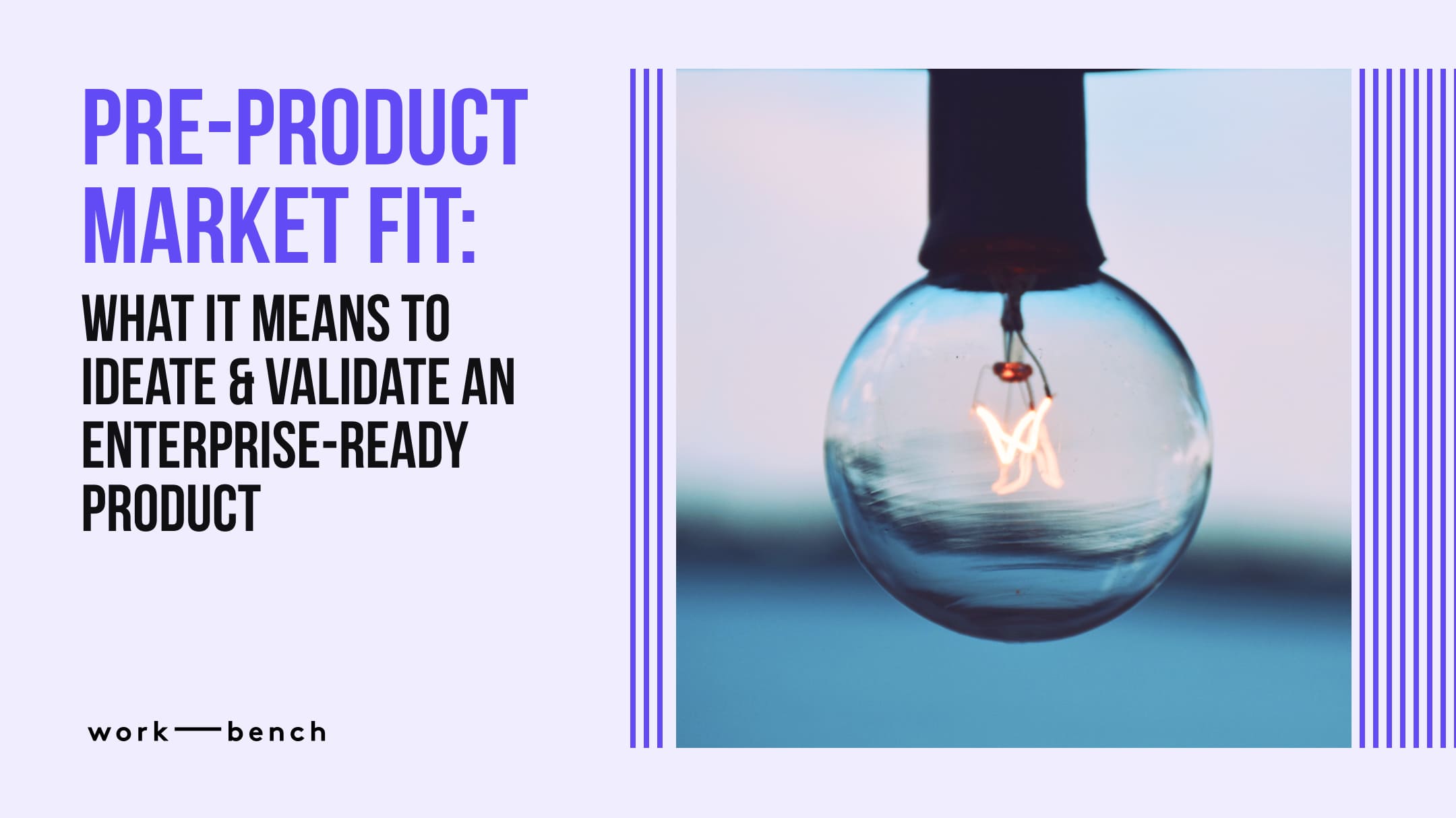The Sales Playbook That Turbocharged Outreach from $0 to $200M ARR
Our November NY Enterprise Tech Meetup focused on a topic we’re particularly passionate about at Work-Bench: enterprise sales and go-to-market tactics.



Finding and optimizing Product-Market Fit (PMF) can feel like a mythical journey at times for founders:
“You often stumble into your product/market fit.” – Andreessen Horowitz
“Finding product-market fit is not a deterministic process. Most of the time, it requires iteration. It requires constant adaptation.” – Sequoia
As Seed-stage investors at Work-Bench, the startups that we source, invest in, and support may not have reached PMF yet - the point at which they have multiple paying customers who love their product and a consistency in growth. Instead, they’re in the earliest days of ideation, building, discovery of new use cases, and validation of an enterprise-ready product that we call Pre–Product Market Fit (PPMF).
This stage requires a lot of hustle, but also a delicate dance of speed and quality. While many founders have been taught YC's well-known mantra of “shipping early and often,” this is ultimately at odds for founders building enterprise software, given Fortune 500s are some of the most internally complex, safeguarded, and regulated companies in the world. To serve these companies requires rigorous product features around security, privacy, and data. Moreover, there is a catch-22 that in order to land your first enterprise customer – you need to understand their requirements, and to understand their requirements, you often need customer feedback. So how do you break into large enterprises to connect with users for product discovery?
Given our deep focus on enterprise software at Work-Bench, we spoke with a number of our founders to learn more about their own early PPMF journey – from getting to early users, conducting customer discovery, prioritizing product decisions and pivoting, and how they were able to ship a “good enough” product to their very first enterprise customer in the earliest days. Spoiler: there is no one formula.
While everyone’s journey to PMF is unique, we unearthed a few general rules of thumbs to consider for any founders building for the enterprise:
Most Work-Bench founders come from previous roles at Fortune 500 or scaling tech companies where they felt the pain point of what they’re solving for now firsthand. This profile isn’t a coincidence. Many enterprise startups are often born from the founders’ own lived experiences. Not only does this give the founder a deep understanding of the problem, industry credibility, and some understanding of early use cases, but it also gives them a pre-established network of potential relevant users to help validate their ideas.
While it’s possible for successful founders to build a company in an industry where they have no previous background or experiences, breaking down doors to enterprise users and networks in the earliest of days may be particularly challenging.
Before diving head first into building a product, it's important to get the right feedback. Set out to talk to a few dozen enterprise users. Even if those users aren’t in a position to buy the product now or aren’t in direct control of a budget, they can still provide critical feedback to what their organization’s tech stack looks like and where their biggest prioritized pain points lie. The next step once identifying user pain would be to connect with budget holders to see if this is a viable solution that's within their budget.
As David Peterson of Angular Ventures, wrote, “Talking to customers isn’t enough. It’s how you do it that matters. And for that, my advice is to take a bit of inspiration from Taiichi Ohno, the architect of the Toyota Production System, and his elegantly simple technique for identifying the root cause of a problem called the Five Whys…ask why five times in a row.”
According to prodct writer Lenny Rachitsky, below are some great questions to unearth during user and executive conversations. And if successful, will help you shape and pull your product in a specific direction.

Eventually, the above should springboard you into finding an enterprise most viable product or “MVP.”
The feedback from your product discovery conversations can help you find a whitespace and a problem that is generalizable across many potential users.
“We knew we reached some sense of product market fit when a bunch of really smart people I respected, independently started articulating the same problem.” - Harald Collet, Founder & CEO of Alkymi
Along this journey, two of the biggest PPMF mistakes founders can make:
The hardest part after gathering feedback and building a product is getting actual users. Here are a few ways to get to your first users:
Lastly, in selling into the enterprise, security and compliance features become a main priority. But selling and working with the above will allow you to get by without robust security capabilities.
The above process is no easy feat. It takes significant time to lay a solid foundation for what a successful product looks like and then head out and execute on that vision. But when done right and without skipping steps, you’ll land an enterprise customer who will not only bring significant ACV to the table, but also be a strategic partner in running fire drills and making your product 100% enterprise ready moving forward.
There are many other ways to cross the Pre-Product Market Fit chasm - we’d love to hear from you if you have other tips, tricks, or strategies to share!
For more on how we think through building a sustainable enterprise software startup, check out our Enterprise Playbooks - our library of tactical, how-to guides. Here are some of our favorites:
If you’re an early-stage enterprise founder or operator — connect with us directly to chat about anything GTM or check out our events page to stay in the loop on all things happening in the Work-Bench community.


